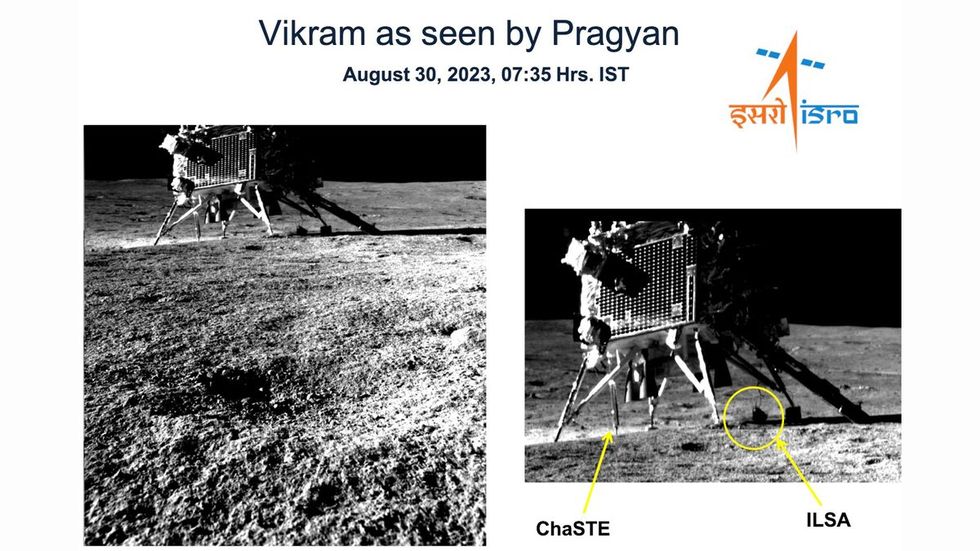What could the mysterious moonquake be?

- On August 23, the India Space Research Organization’s Vikram lunar lander, carrying the Pragyan rover, soft landed on the Moon’s southern polar region.
- Onboard the Vikram lander is the Instrument for Lunar Seismic Activity (ISLA), which captured Pragyan’s first journey onto the surface as well as this unexpected “natural event”
- This is likely the first recorded evidence of lunar seismic activity since the Apollo Missions more than 50 years ago
Just recently, the India Space Research Organization (ISRO) completed a years-long mission to be the fourth country to ever land on the Moon and the first to land in the southern lunar polar region. Now that the tricky part involving retro-rockets and orbital mechanics is over, the science can truly begin—and Chandrayaan-3’s Vikram lander isn’t wasting any time.
Onboard the Vikram lander, which is also carrying the lunar rover Pragyan, is the Instrument for Lunar Seismic Activity (ILSA) based on Micro Electro Mechanical Systems (MEMS) technology that’s already detecting minute rumblings on the Moon. The most obvious disruptions came from the Pragyan rover itself as it began its mission on the lunar surface, but on August 26, Vikram also “recorded an event, appearing to be a natural one,” according to an ISRO statement. The space agency says it’s investigating the seismic source.
This is the first time that humans have detected new seismic events on the Moon since the Apollo missions between 1969 and 1972, which were designed to discern the internal composition of the Moon.
 ISRO
ISRO
An image of the Vikram lander with the ISLA experiment clearly marked along with ChaSTE (Chandra’s Surface Thermophysical Experiment), which measures the temperature profile of the lunar topsoil.
Because of the experimental nature of the Apollo 11 mission, it arrived on the Moon carrying an Early Apollo Surface Experiments Package (EASEP) with only two experiments packed inside. Future Apollo missions (excluding Apollo 13 for obvious reasons) arrived at the Moon with a more robust Apollo Lunar Surface Experiments Package (ALSEP), which contained geophysical instruments engineered to monitor the lunar surface for one year after the astronauts’ departure. Instead, the instruments operated for 8 years, with the last of the experiments shutting down on September 30, 1977.
Amazingly, the ALSEP seismometers could magnify lunar vibrations by 10 million times, a feat completely made impossible on Earth due to weather and human-induced noise. While most Apollo missions included a passive scientific experiment designed to monitor the entire Moon, Apollo 14 and 16 included active seismic experiments to monitor the local area. Apollo 17, the last of the crewed lunar missions, contained a Lunar Seismic Profiling Experiment designed to dig up data on the physical properties of lunar material near the surface
Although a robust data set, scientists have been hungry for more in the 50 years since the Apollo missions. And Vikram’s data is doubly valuable, as no lunar lander has ever visited the Moon’s southern polar region. This area of the Moon is of particular interest because of its deposits of ice—a vital resource for anyone thinking of setting up shop on the lunar surface. In fact, the lunar south pole is so enticing that the U.S. and China both have future missions planned for the region.
For now, ISRO has placed the solar-powered Vikram and Pragyan into sleep mode during the 14-day-long lunar night. But they should reawaken around September 22, ready to uncover more seismic secrets of Earth’s only natural satellite.

